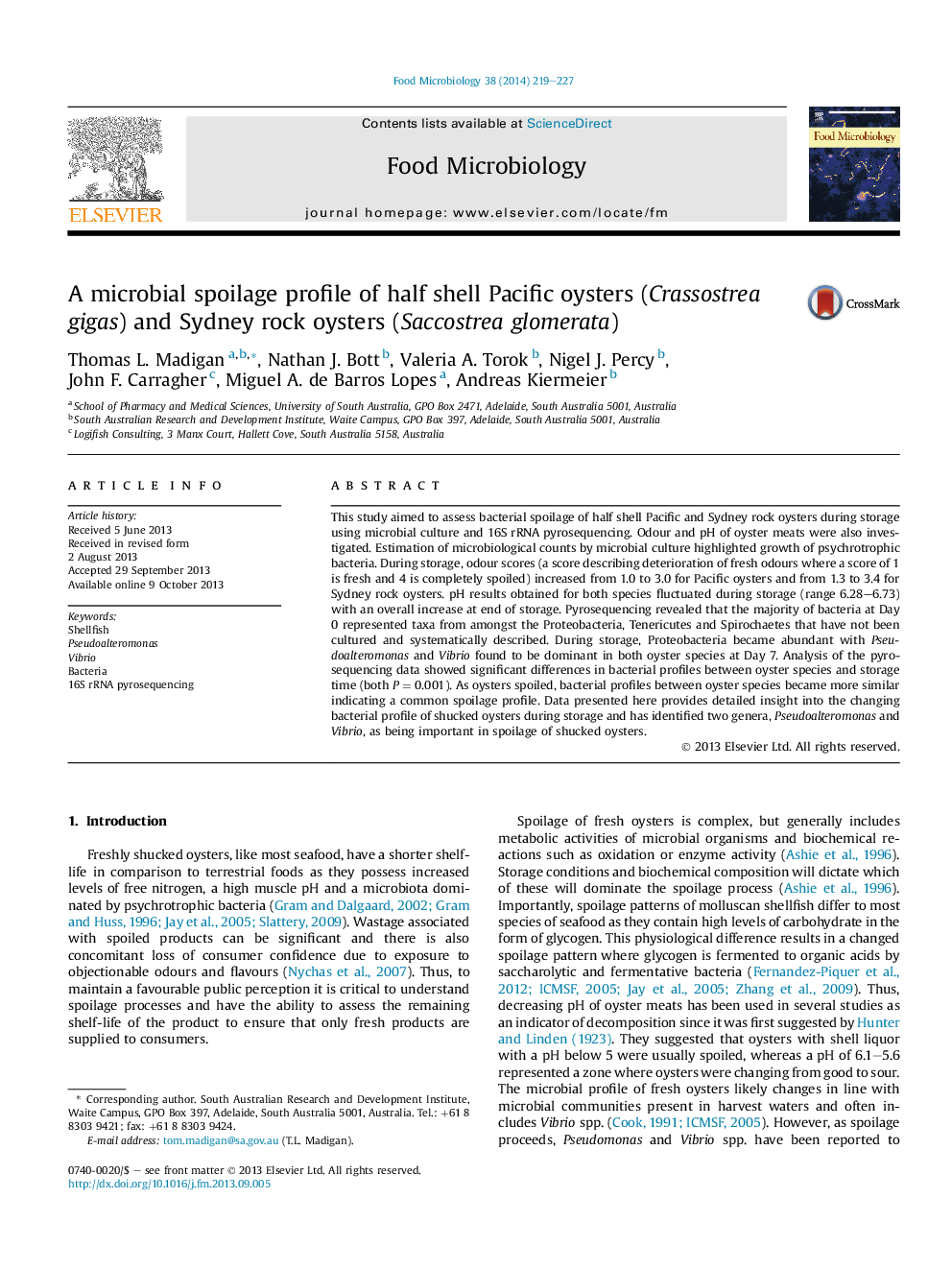| Article ID | Journal | Published Year | Pages | File Type |
|---|---|---|---|---|
| 4362938 | Food Microbiology | 2014 | 9 Pages |
•The bacterial profile of freshly harvested oysters is dominated by taxa that have not been cultured and systematically described.•As oysters deteriorated, bacterial profiles between oyster types became similar indicating a common spoilage profile.•Pseudoalteromonas and Vibrio identified as important in spoilage profile of oysters.
This study aimed to assess bacterial spoilage of half shell Pacific and Sydney rock oysters during storage using microbial culture and 16S rRNA pyrosequencing. Odour and pH of oyster meats were also investigated. Estimation of microbiological counts by microbial culture highlighted growth of psychrotrophic bacteria. During storage, odour scores (a score describing deterioration of fresh odours where a score of 1 is fresh and 4 is completely spoiled) increased from 1.0 to 3.0 for Pacific oysters and from 1.3 to 3.4 for Sydney rock oysters. pH results obtained for both species fluctuated during storage (range 6.28–6.73) with an overall increase at end of storage. Pyrosequencing revealed that the majority of bacteria at Day 0 represented taxa from amongst the Proteobacteria, Tenericutes and Spirochaetes that have not been cultured and systematically described. During storage, Proteobacteria became abundant with Pseudoalteromonas and Vibrio found to be dominant in both oyster species at Day 7. Analysis of the pyrosequencing data showed significant differences in bacterial profiles between oyster species and storage time (both P = 0.001). As oysters spoiled, bacterial profiles between oyster species became more similar indicating a common spoilage profile. Data presented here provides detailed insight into the changing bacterial profile of shucked oysters during storage and has identified two genera, Pseudoalteromonas and Vibrio, as being important in spoilage of shucked oysters.
